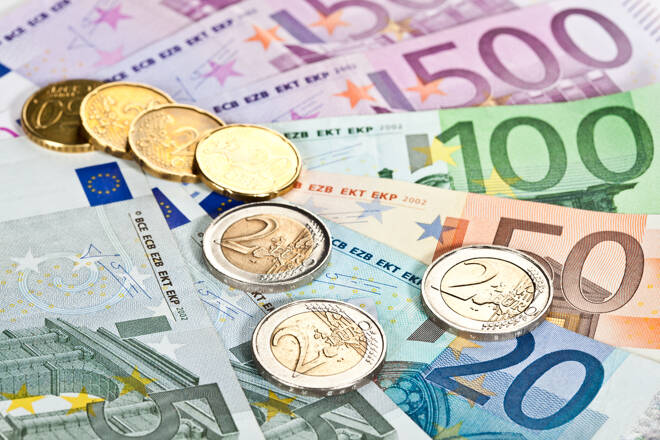Advertisement
Advertisement
Southern and Eastern European Countries Set to Receive Most EU Funds Over 2021-27
Published: Jun 7, 2022, 21:12 GMT+00:00
Italy, Spain, Poland and France stand to receive around half of the EUR 1.2trn redistributed by the EU to national governments over 2021-27 via recovery, cohesion and agricultural funding.
These funds will support southern and eastern European countries recover from the pandemic crisis and economic impact of the Russia-Ukraine war. The transfers will be especially relevant for central and eastern European EU member states, Greece and Portugal, which will receive funds of between 25-40% of their 2021 economic outputs.
While recovery funds target Italy and Spain given their Covid-19 driven economic shocks of 2020, the cohesion funds, which support long-run economic development objectives, as well as the agricultural funds, will advance economic growth precisely of those EU economies most affected by the Russia-Ukraine war. These include central and eastern European and Baltic states, where growth prospects have markedly declined due to high inflation curbing domestic consumption.
The EU will disburse around EUR 1.2trn over 2021-27 to its member states
Overall, the EU will disburse around EUR 1.2trn (about 8.5% of EU-27 GDP) over 2021-27 via cohesion funding (EUR 387bn), agricultural policy funds (EUR 261bn), resources from the previous 2014-20 budget of EUR 255bn, which can still be disbursed until 2023, and EUR 332bn of grants under the Next Generation EU (NGEU) Recovery and Resilience Facility (Figure 1). These funds represent the most important redistributive mechanisms for advancement of economic recovery and sustainable growth of EU countries.
Figure 1. Main redistributive EU instruments for recovery and growth
EUR bn
However, not all EU member states set to benefit equally
However, not all EU member states are set to benefit equally from these funding instruments, reflecting allocation criteria of each policy, which include countries’ differing levels of economic development and social needs but also political priorities and realities defining financial purposes of each policy area.
Italy is by far the largest beneficiary under absolute terms, set to receive around EUR 185bn, excluding EUR 123bn in NGEU loans, followed by Spain (EUR 177bn), Poland (EUR 165bn), France (EUR 123bn), Romania (EUR 81bn) and Germany (EUR 77bn).
Similarly, each instrument benefits an alternative constituent (Figure 2). While NGEU is set to benefit Italy and Spain the most in absolute terms since the Covid-19 crisis, the cohesion funds benefit Poland by far the most with EUR 79bn, followed by Italy (EUR 43bn), Spain (EUR 36bn) and Romania (EUR 32bn). Conversely, the Common Agricultural Policy still helps France the most significantly with EUR 46bn, followed by Spain and Germany (31bn each), Italy (27bn) and Poland (22bn).
On aggregate, seven EU member states receive around 70% of aggregate funds led by Italy, Spain and Poland of each between 13-15%, followed by France (10%), Romania (6.5%), Germany (6.3%) and Greece (5%). The other 20 EU member states receive circa 30% of funding combined. These figures exclude SURE loans, the temporary instrument to finance employment-related programmes during the Covid-19 crisis, and NGEU loans as they will be repaid by respective member states over time.
Figure 2. Main redistributive EU instruments for recovery and growth by member state
EUR bn; % of GDP
Main users of SURE and NGEU loans are the same EU member states
However, the main users of SURE and NGEU loans are the very same EU member states. Italy received EUR 27bn for SURE and is set to receive EUR 123bn in NGEU loans. Spain received EUR 21bn under SURE, followed by Poland with EUR 11bn. Other countries have made minimal requests for NGEU loans thus far. Apart from Italy, these countries include Romania (EUR 14.9bn), Greece (12.7bn) and Poland (11.5bn). While all these loans need to be repaid, countries still benefit from low interest rates, which, under SURE, the EC estimates resulted in savings of circa EUR 3.8bn for Italy, EUR 1.6bn for Spain, EUR 0.9bn for Romania and EUR 0.5bn for Greece.
Finally, Croatia, Bulgaria, Latvia, Slovakia, Greece, Romania and Hungary will receive between 30-45% of their respective 2021 GDPs over 2021-27, while Poland, Lithuania, Estonia and Portugal receive between 25-30%. For Italy and Spain, the main beneficiaries of EU funding in absolute terms, these figures are still elevated of around 15% for Spain and 10% for Italy, compared with around 5% for France and 2% for Germany.
For a look at all of today’s economic events, check out our economic calendar.
Alvise Lennkh-Yunus is the Deputy Head of Sovereign and Public Sector ratings at Scope Ratings GmbH.
About the Author
Alvise Lennkh-Yunuscontributor
Alvise Lennkh-Yunus is Head of Scope’s Sovereign and Public Sector ratings team.
Advertisement
